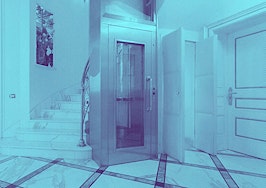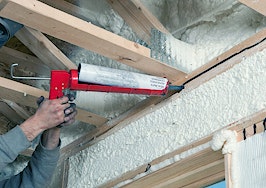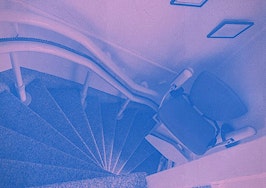The fireplace hearth was the heart of the home in early America due to its central location and use as a source of heat and cooking. Nowadays, given modern heating sources and today’s elaborate kitchens, fireplaces have become less of a necessity. Instead, they’ve turned into more of a decorative or romantic focus in a home.
Real estate listings with fireplaces are highly sought after; a fireplace greatly increases the value of a home. To be more specific, The National Association of Realtors reported that having a fireplace could bump up the value of a home by about $12,000.
In residential homes, electric fireplaces have been in use since 1912 but became popular in the 1950s. Infrared technology, which came about in the 1980s as the result of advances in Hollywood special effects, has made the appearance of flames more attractive — and just as importantly, more realistic.
Modern advances have made electric fireplace inserts available to be retrofitted in existing brick fireplaces. These attractive and efficient fireplaces give the appearance of realistic flames but are safer, cleaner and more efficient than burning logs for heat.
Electric fireplaces are not a substitute for a central heating system, but they will help heat a room, as there is no loss of heat escaping up an open chimney.
Electric fireplaces will not increase the value of a home as much as a gas fireplace, but they are much easier to install. They require no piping or venting. In their most basic format, an electric fireplace is delivered, placed where the homeowner desires and then plugged into a standard household duplex receptacle and turned on.
Safer than gas flames or burning logs, the electric flames present no danger of burning a homeowner who gets too close. Not only does the infrared technology present a realistic flame and glowing embers but also includes a realistic sound of burning logs.
More advanced electric fireplaces offer Bluetooth-quality audio to the visuals. There is no need to order firewood, carry it in from outside and clean ashes from the fireplace afterward. Electric fireplaces can be regulated by remote control, offering a variety of flame colors and temperatures.
These fireplaces give off heat from a heating element at the top of the unit, which is then distributed by a fan, blowing heat into the room. Electric fireplaces typically provide 4,600 BTU (British Thermal Units, a measure of heat). However, a more powerful unit can be wired to 220/240-volt electric lines with outputs of up to 8,900 BTU.
If the homeowner does not order an electric fireplace in a freestanding fireplace mantle, it will arrive will wall mounting brackets, allowing it to be attached to the wall.
There is no limit to the options and materials available to enhance the electric flame unit. Stone, stainless steel, glass, mirror, plastic laminate are only some of the surfaces that can be installed to give the fireplace a realistic, integral built-in quality and feel.
A fireplace is historically a centerpiece of a room and a status symbol. Modern technology has made electric fireplaces available to any type of home, without the need to install chimneys or venting.
In addition to the romantic visuals that a fireplace provides, the practicality of helping to warm the temperature of a room by adjusting a remote control is another feature that has made electric fireplaces accessible and desirable in today’s homes.
Gerard Splendore is a licensed associate real estate broker with Warburg Realty in New York. Connect with him on LinkedIn.













